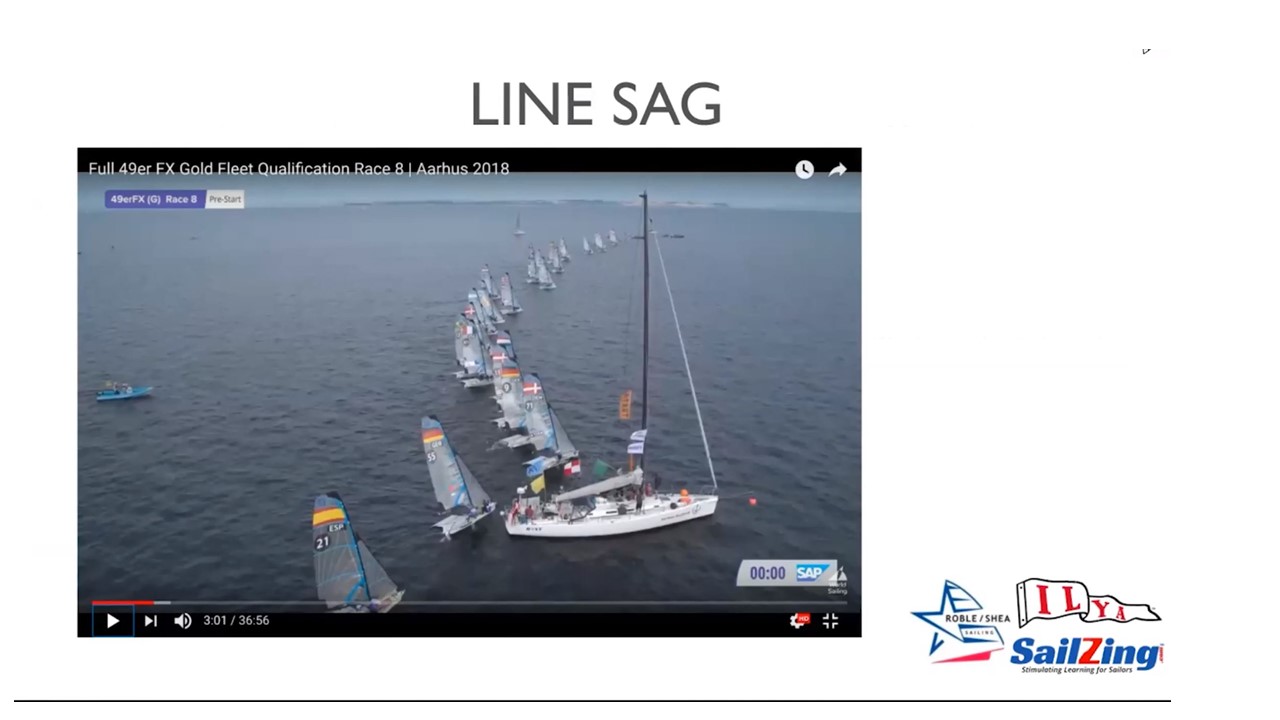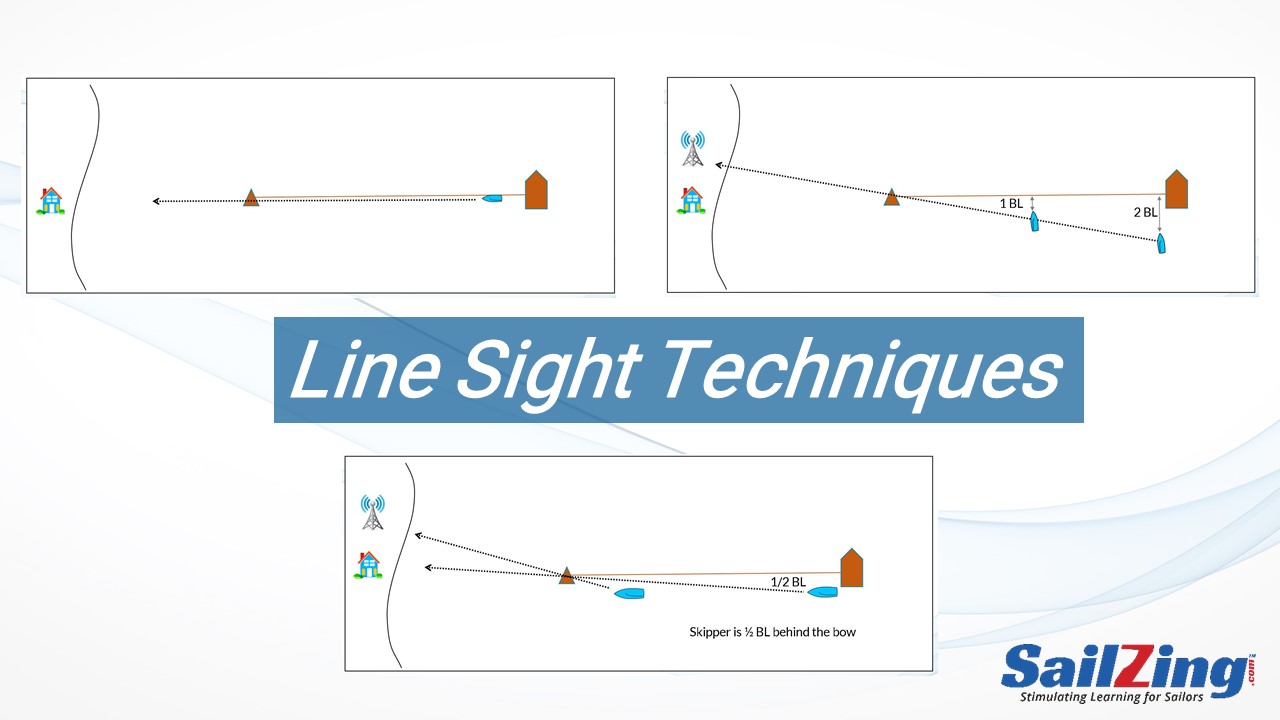Would it surprise you that the picture above showing line sag is from high level competition on the world stage? In the ILYA Fast Forward webinars, we learned from Roble/Shea sailing that line sag is common even at the top levels of sailing. This presents a huge opportunity for sailors willing to do their homework and be brave.
In the starting webinars for adults and youth, Steph Roble and Maggie Shea show the “illusion” that causes line sag. If you understand this illusion, and apply some simple tips to combat it, you can get a great start in the middle of the line.
Watch the video excerpts from Roble/Shea on line sag or read the written summary below. Or watch the entire starting webinar for youth or adults.
Mid-line Starts
In Where to Start, we discussed the pros and cons of starting in the middle. In big fleets, when neither side is obviously advantaged, many top sailors prefer to manage risk with a mid-line start.
However, it’s harder to judge the line from the middle, since you’re further away from the line flag/pin buoy. This uncertainty, plus what we’ll call the “bow-even illusion” usually results in line sag.
The bow-even illusion
Let’s start with a two-question quiz.

Check your answer here.

Check your answer here.
These questions illustrate the “bow-even illusion,” which is that if your bow is even with a windward boat’s bow, you are behind the windward boat. To be even with a windward boat, you have to put your bow in front of the windward boat, so that the bows are the same distance upwind. You may have to get far enough forward so that your body in the skipper’s position is even with the windward boat’s mast.
Similarly, to avoid being behind a leeward boat, your mast must be at least even with the skipper of the leeward boat, if not a little ahead.
Taking Advantage of Line Sag – Four Tips
If you know what causes line sag you can use it to get a good start, even in the middle of a long starting line. Think about the huge opportunity in a black flag or U flag start, when other boats are scared to death of being over. If you’re prudent and do your homework, you can be boat lengths ahead.
#1. Get a line sight
If there’s line sag, you can use a line sight to something tall on shore, even if boats on the ends are covering the starting markers. See our post on Line Sights.
#2. Move up until you can see boats at the ends
If you’re in the middle of a line sag and can’t see the boats at the ends of the line, you know you’re way behind. Move forward until you can see those boats; they know where the line is.

#3. Are you in line with boats at the ends?
Once you can see boats at the ends, go head to wind and make sure that you are part of a straight line between the ends. If you stretched out your arms to the sides, would they both line up with the ends? This is a good job for the crew if you have one.

#4. Race the boats closest to you
If you can’t use a line sight, race the boats closest to you. If you stay even with them, your sail numbers will be covered from the race committee members watching the line. Once they get ahead, you are no longer worried about being over, but rather about being buried.
#5. GPS tools
Steph and Maggie commented briefly on GPS aids to starting. The 49er fleet does not allows GPS aids. Somem one design fleets do allow these tools. Steph and Maggie’s advice is to use these as a reference, but don’t rely exclusively on them. We’ll write more about GPS in future post.
Starting Strategy and Tactics Category – SailZing.com



